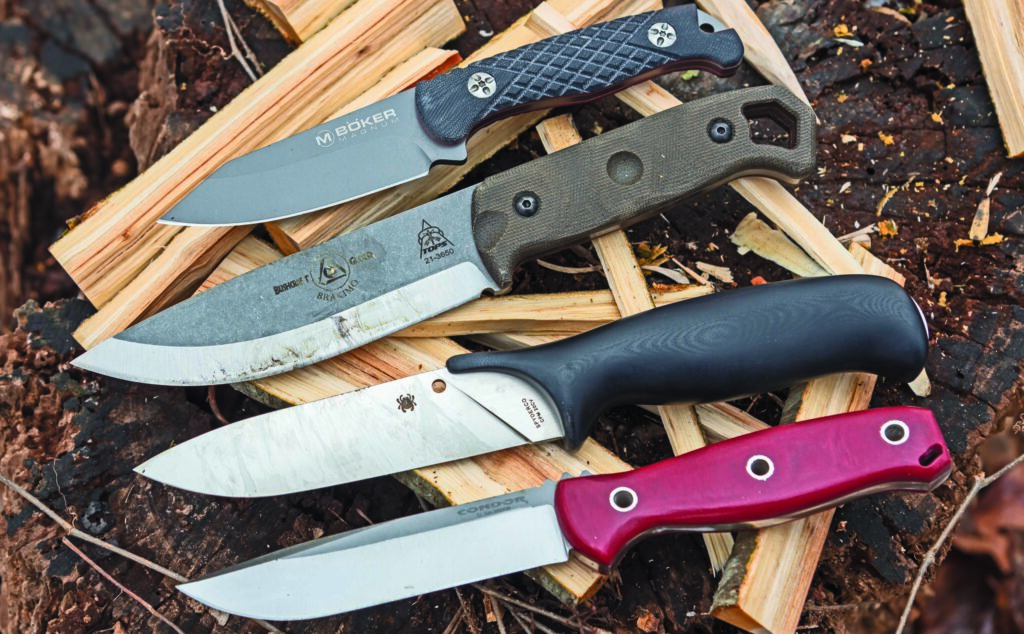Tools are essential for outdoor survival and exploration. Every adventurer needs a survival knife. A survival knife can help you traverse difficult conditions, build shelters, make food, and more.
This comprehensive overview covers survival knife features, usage, and considerations. What is a survival knife, and why do outdoor enthusiasts need one? Find out.
What is a Survival Knife?
Survival knives improve outdoor survival. Its fixed blade and sturdy construction assure longevity and reliability in harsh situations. Survival knives can cut, chop, slice, pry, dig, and defend themselves.
These knives are designed to survive severe conditions and assist you negotiate outdoor situations.
Essential Features of a Survival Knife

To find the right survival knife, consider several crucial aspects. Key features include:
Blade Construction
Survival knives’ blades are its most important parts. Stainless, carbon, and high-carbon stainless steel blades are common. Each material has strengths, corrosion resistance, and maintenance pros and cons.
The blade design—drop point, tanto, or clip point—also impacts the knife’s functionality and versatility.
Blade length/thickness
Survival knives’ blade length and thickness matter. A larger blade gives more cutting surface and leverage, while a shorter blade gives better control for complex tasks.
The knife’s durability depends on blade thickness. To maximize performance and portability, length and thickness must be balanced.
Tang-Handle Construction
Blade tangs extend into handles. Full tang knives are stronger and more durable due to their full-length blades. Partial tang knives are weaker because the blade extends only partially into the handle. Handle construction impacts grip, comfort, and knife control.
Ergonomics and Handling
Survival knives have wood, rubber, or synthetic composite handles. Durable, weather-resistant, and wet-grip handle material is ideal. Ergonomics ensure comfort and avoid hand fatigue during prolonged use. Look for ergonomic handles with textured grips.
Carrying and Sheath Quality
A good sheath protects your survival knife. The sheath should securely hold the knife, provide quick access, and resist tough situations. Consider belt loops, MOLLE compatibility, and lanyard attachments.
Types of Survival Knives

Survival knives are designed for different uses and preferences. Common survival knives:
Fixed-blade Survival Knives
Fixed-blade survival knives are most popular and recommended. Full-tang construction makes them strong, durable, and reliable. These knives excel in chopping wood, preparing game, and building shelters. Instead of folding knives, they’re more durable.
Folding Survival Knives
Pocket knives are folding survival knives. The blade folds into the grip for secure storage. Folding knives are convenient for everyday carry and lighter jobs but less durable than fixed blade knives.
Survival Knives
Multi-tool survival knives have a folding blade, screwdrivers, can openers, saws, and more. These multitool knives are multipurpose and small. Multi-tool knives are convenient and useful, but they’re not as strong as survival blades.
FAQ’s
What should a survival knife have?
Consider blade material, design, length, thickness, tang, and handle construction when choosing a survival knife. Consider handle material, ergonomics, sheath quality, and carry alternatives.
Survival knives for self-defense?
Survival knives are not designed for self-defense but can be utilized in extreme situations. Avoid conflict and prioritize safety.
How do I sharpen a survival knife?
Survival knives need regular maintenance. To avoid corrosion, clean and dry the blade after use. Following the manufacturer’s recommendations, sharpen the blade.
Are survival knives illegal?
Survival knife laws differ by jurisdiction. Before carrying a knife, check local laws.
Survival knives for bushcraft?
Survival knives can be used for carving, feathering, batoning, and woodworking. These tasks may require specialist bushcraft knives.
Survival knife brands?
Benchmade, ESEE, Gerber, KA-BAR, and Morakniv make great survival knives. Researching and reading reviews can help you locate a brand you like.
Conclusion
Outdoor enthusiasts and adventurers need survival knives. Survival scenarios benefit from its adaptability, durability, and functionality.
By studying survival knife features, types, and considerations, you may prepare for outdoor situations. Choose a knife that meets your needs and prioritize safety and ethical knife use.
